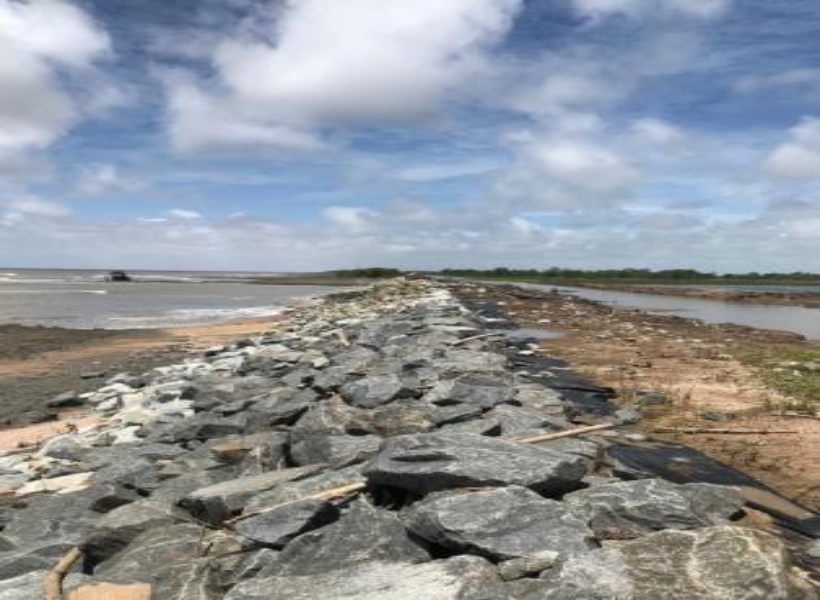Guyana’s resilience against climate change and coastal flooding will be boosted now that the World Bank has approved a US$45 million loan to enhance the country’s sea defence infrastructure. The loan will be directed towards strengthening the drainage systems and flood protection mechanisms in Guyana’s vulnerable low coastal plain, an area critical for both its population and agriculture.
According to the report, Guyana’s low coastal plain, a narrow belt of land bordering the Atlantic Ocean, is home to approximately 40% of the nation’s population, equivalent to around 320,000 people. This region is not only densely populated but also holds about 30% of the country’s arable land, making it a key agricultural hub.
As such, the project will focus on rehabilitating and reconstructing drainage sluices over an area of about 2000 sq.km. This intervention is crucial for the region’s survival and prosperity, as it lies significantly below sea level and is particularly vulnerable to flooding and saltwater intrusion.
The drainage sluices, which will be a focal point of the rehabilitation efforts, serve multiple functions essential for the region. They are critical in draining excess rainfall, preventing saltwater from infiltrating fertile lands, and managing water levels for irrigation. Effective operation of these sluices ensures that agricultural activities can continue uninterrupted and that residential areas remain protected from flooding.
It was further noted that agriculture in the low coastal plain is highly dependent on a well-managed water system for irrigation, and the success of crops often hinges on the performance of these drainage systems. With the rehabilitation of the sluices, Guyana will be better positioned to maintain its agricultural productivity, which is a significant contributor to the country’s economy.
**Addressing Climate Change Vulnerabilities**
The project is designed with a strong emphasis on climate change adaptation. The low coastal plain is increasingly threatened by climate change-induced phenomena such as rising sea levels, stronger storm surges, and more frequent and intense rainfall events. By improving the resilience of the drainage infrastructure, the project aims to mitigate these risks and enhance the country’s overall climate resilience.
According to the technical analysis in the World Bank’s project report, the rehabilitation of the drainage sluices will be guided by future climate projections to ensure that the infrastructure can withstand extreme weather conditions. This includes adapting the structures to prevent flooding from rising sea levels and strong waves, making them more robust against future climatic challenges.
In addition to immediate infrastructure improvements, the project includes activities aimed at strengthening Guyana’s asset management systems and the operation and maintenance (O&M) of the drainage structures. These measures are intended to ensure the long-term sustainability and effectiveness of the sea defense mechanisms.
“Activities such as strengthening the asset management system and O&M of the structures will also critically and directly contribute to improving resilience and achieving adaptation to climate change… The GoG (Government of Guyana) will thus be better positioned to manage existing and future flood events,” the report noted.
This initiative is part of a broader strategy to protect vulnerable regions and enhance their capacity to cope with environmental challenges. It highlights the importance of investing in infrastructure that not only meets immediate needs but also prepares communities for future risks.
With the support of the World Bank, Guyana is set to make significant strides in fortifying its sea defenses, thereby protecting its people, agriculture, and economy from the adverse effects of climate change.













